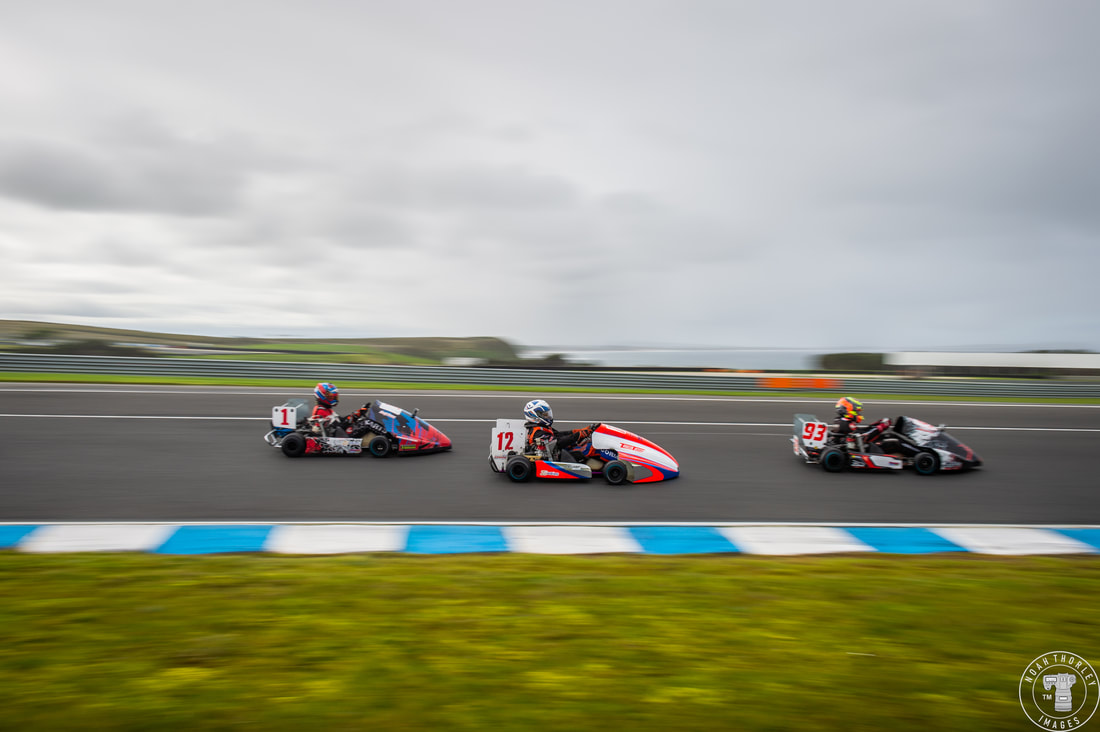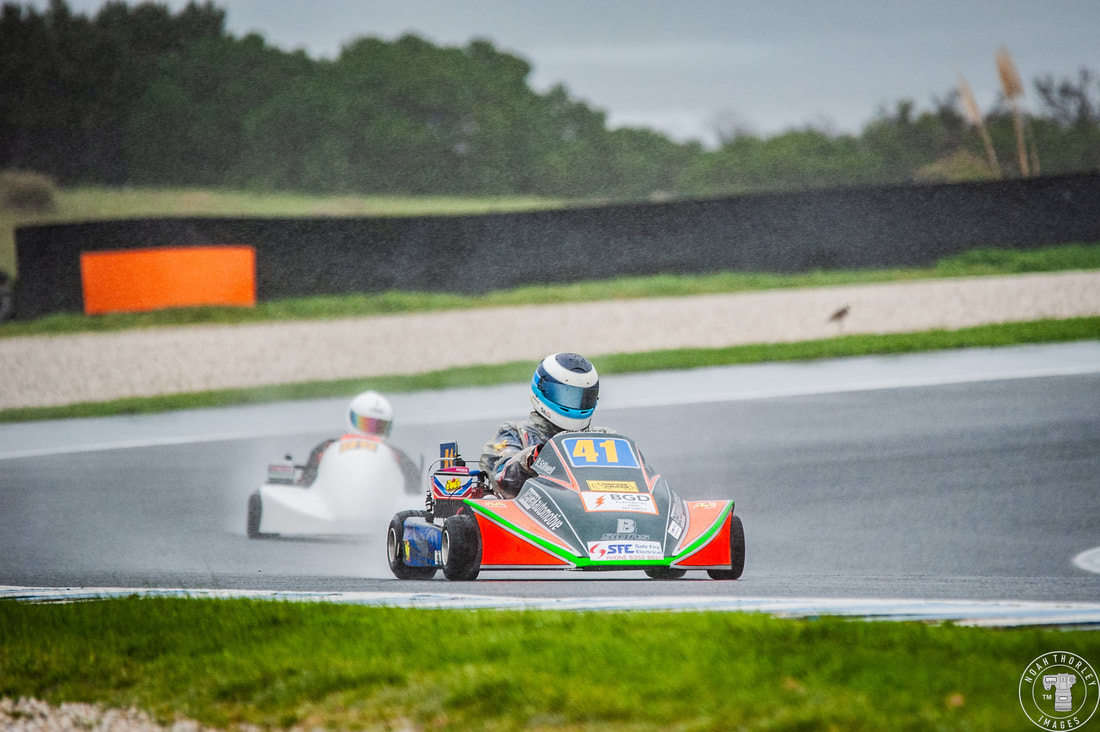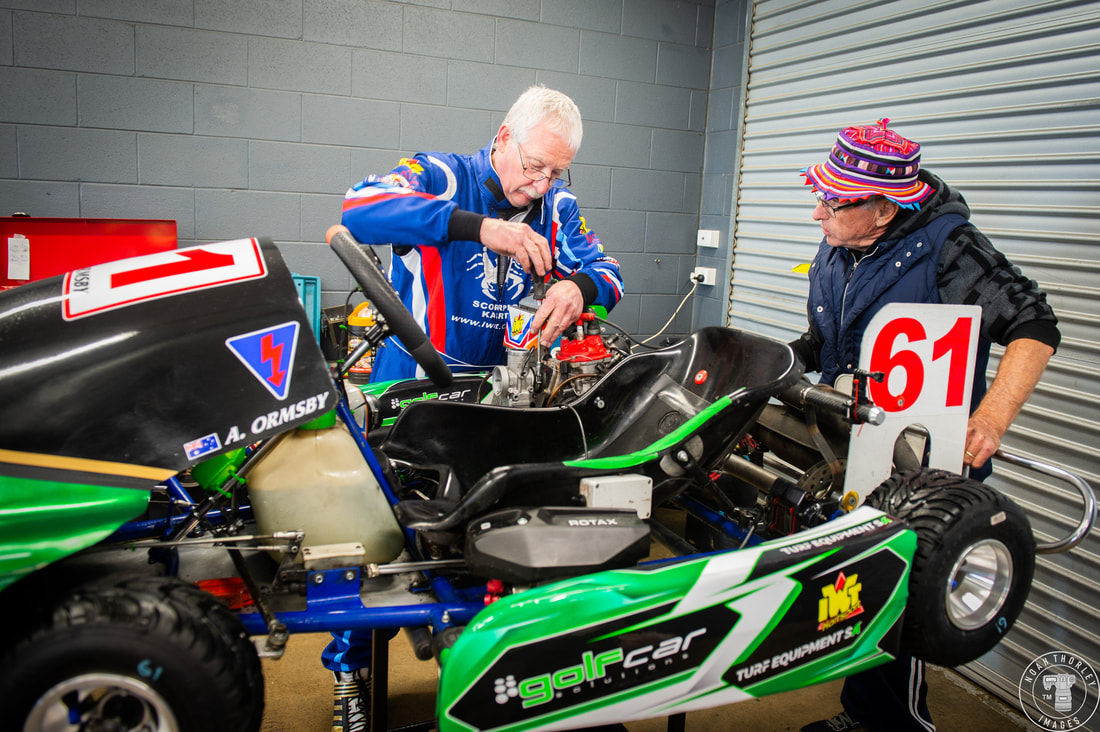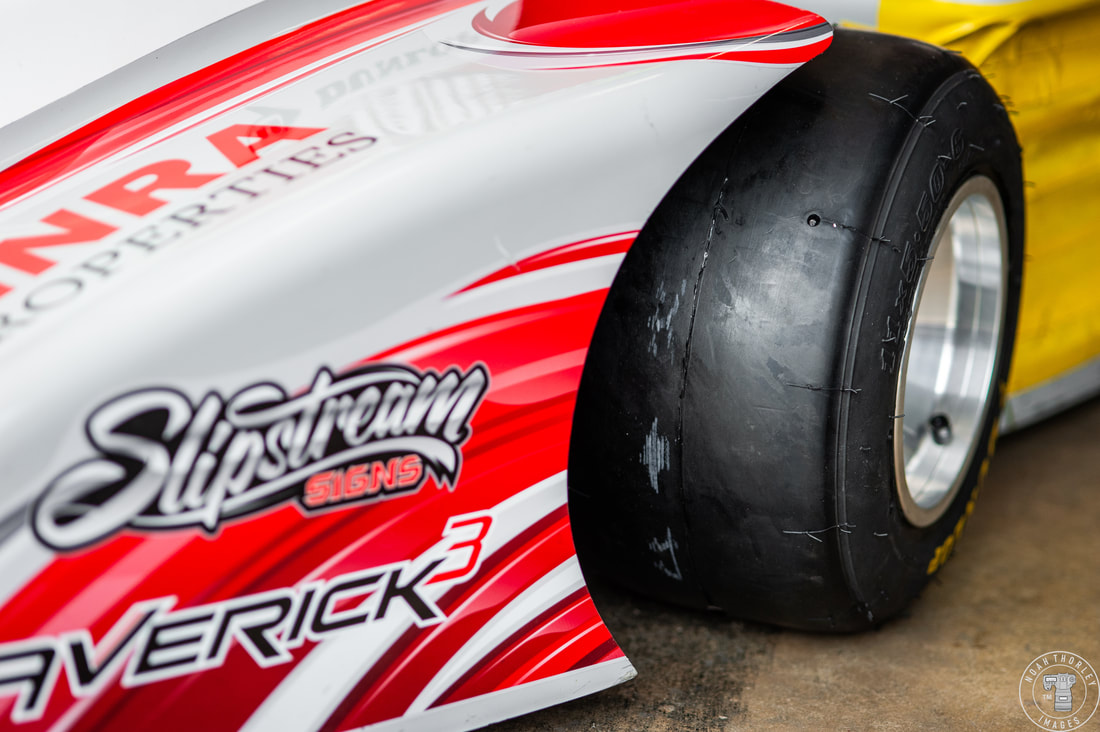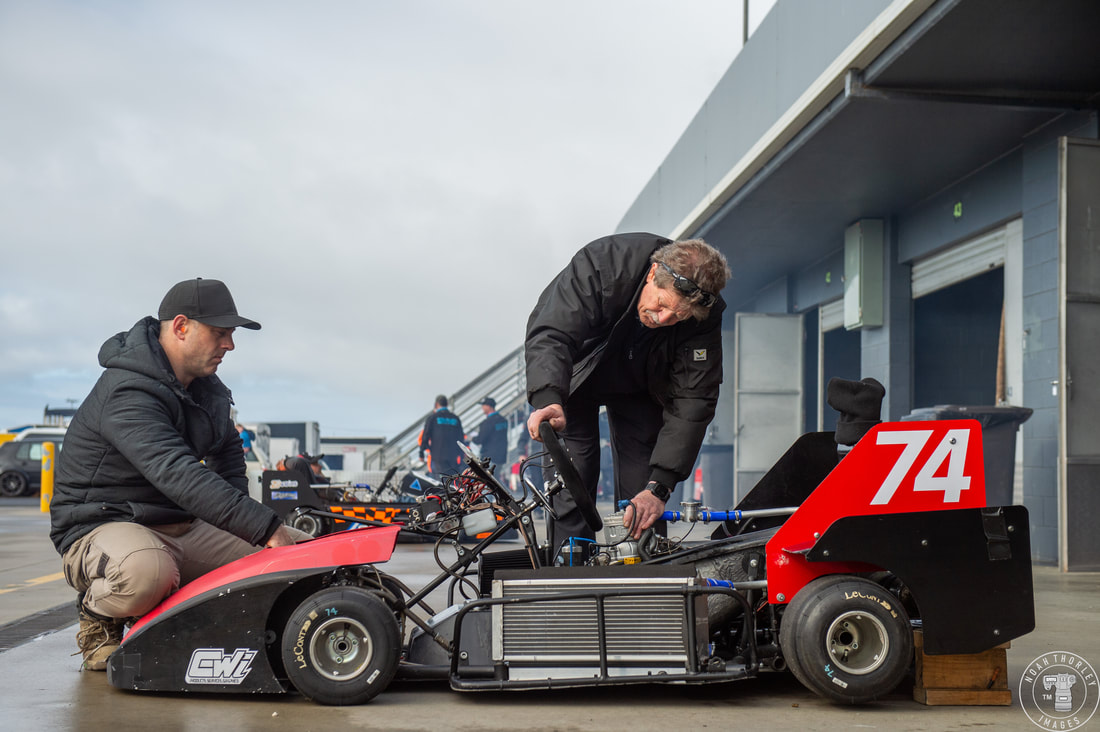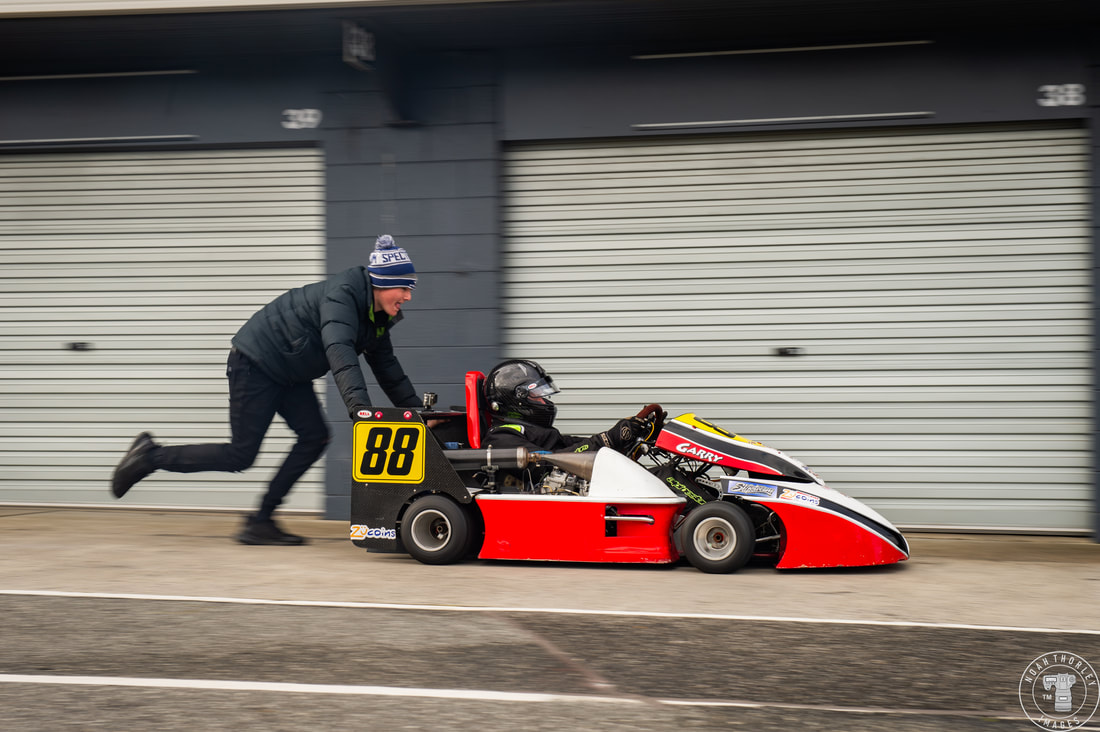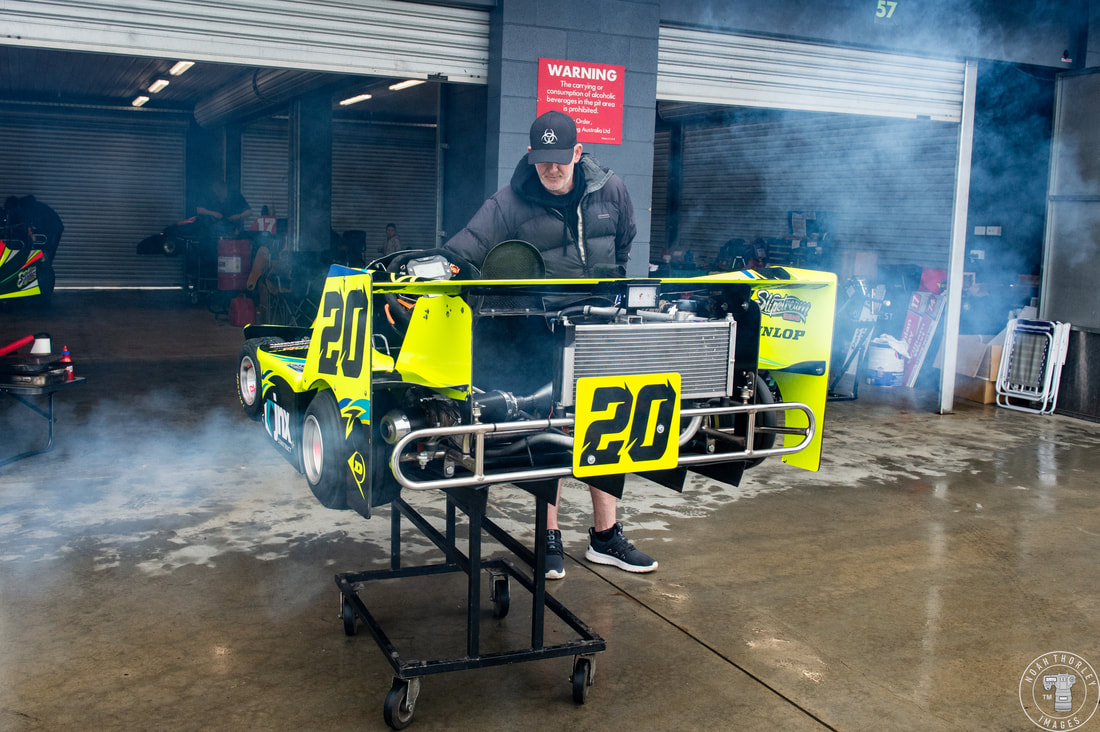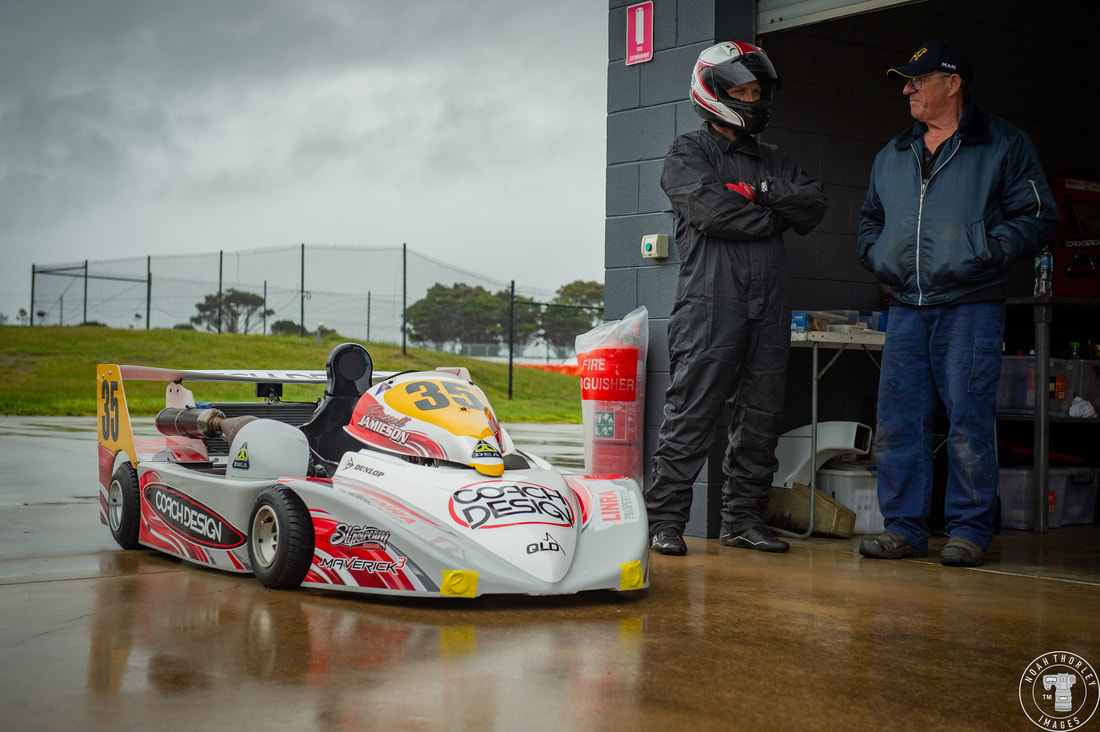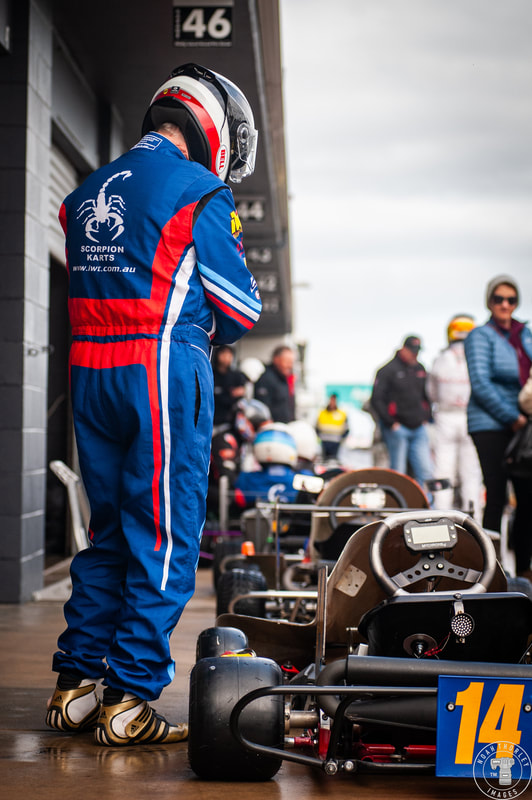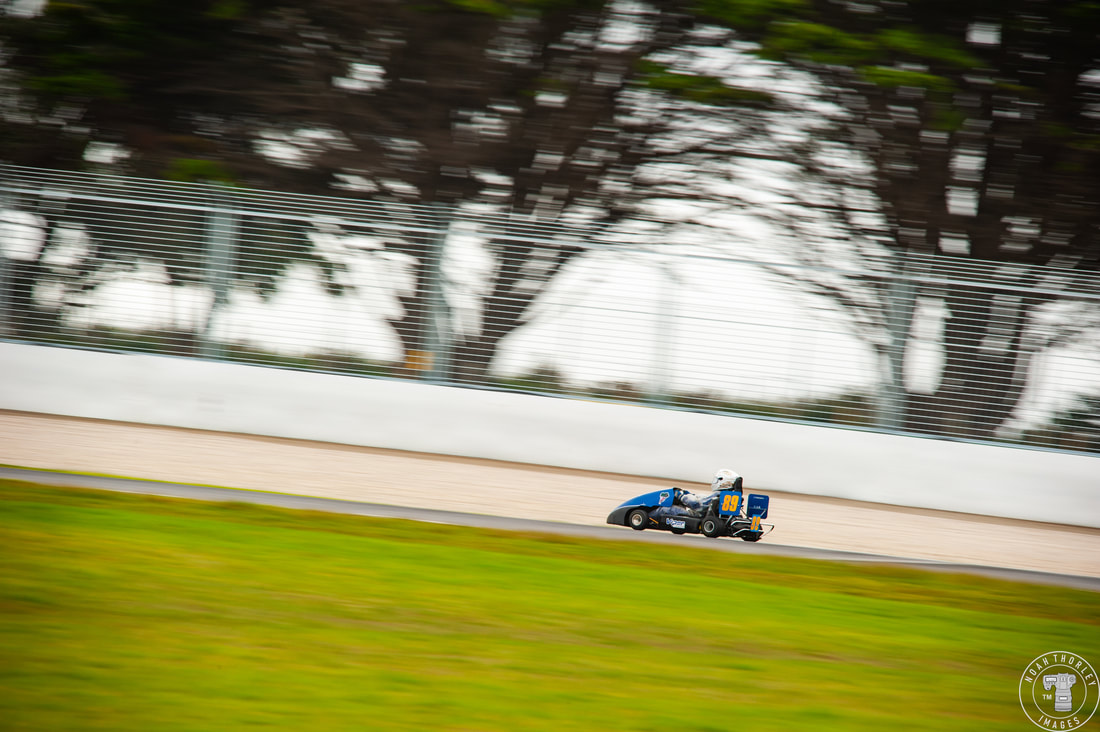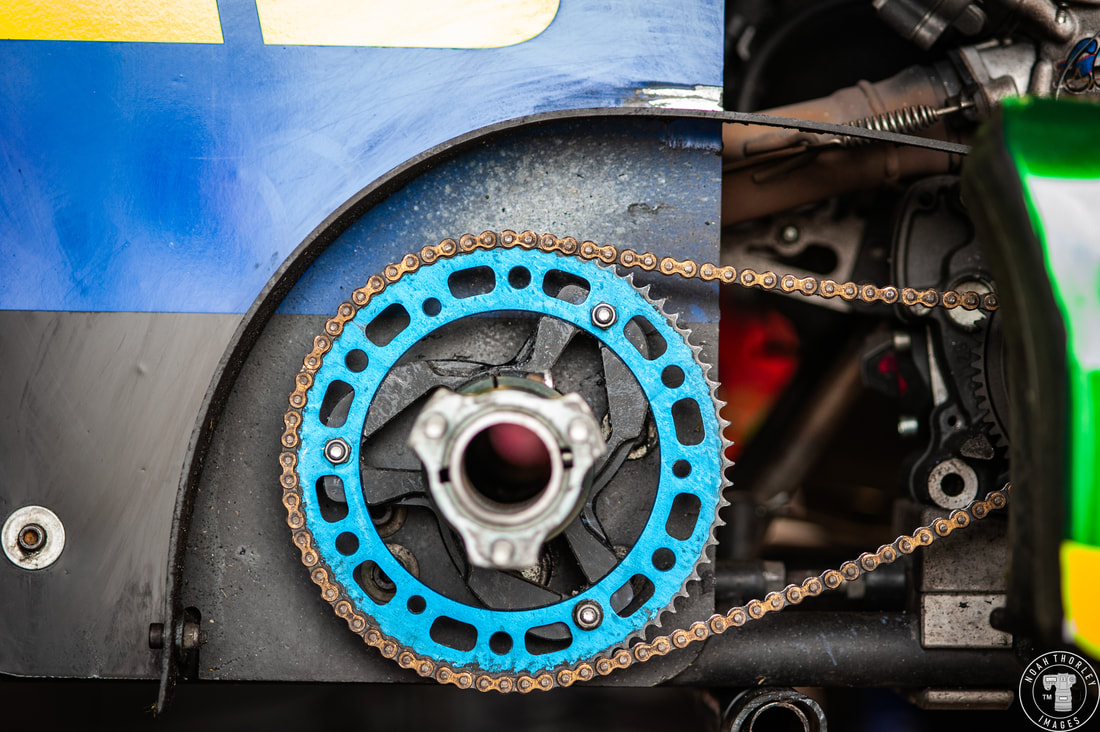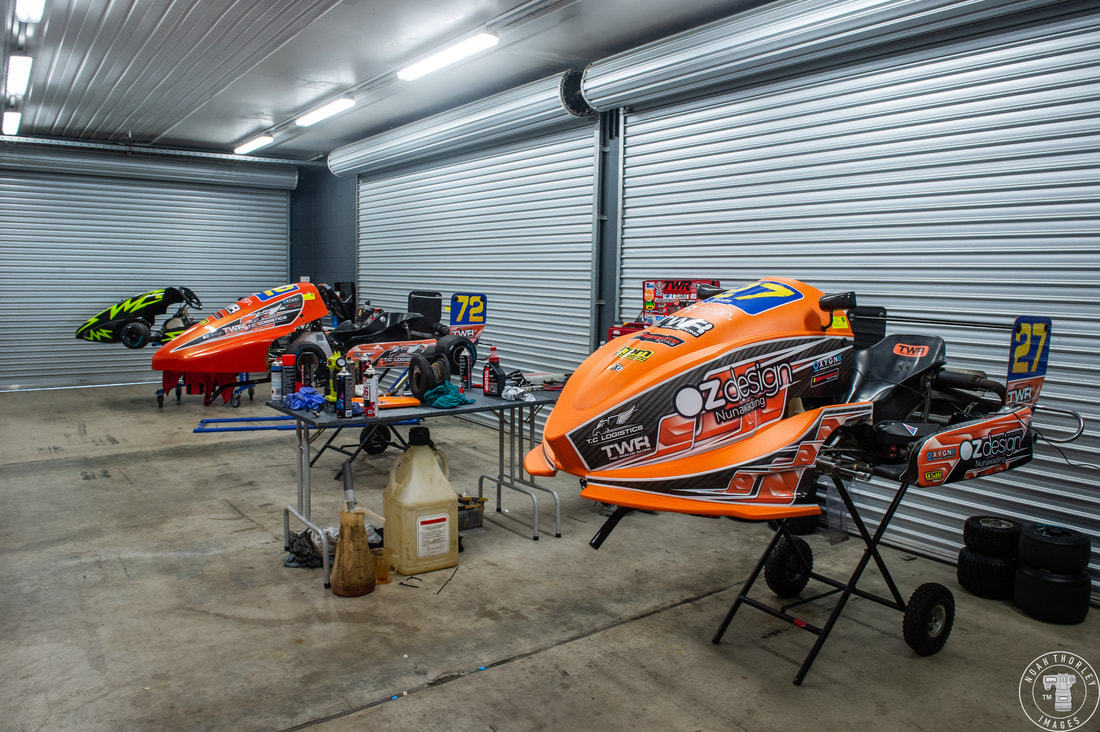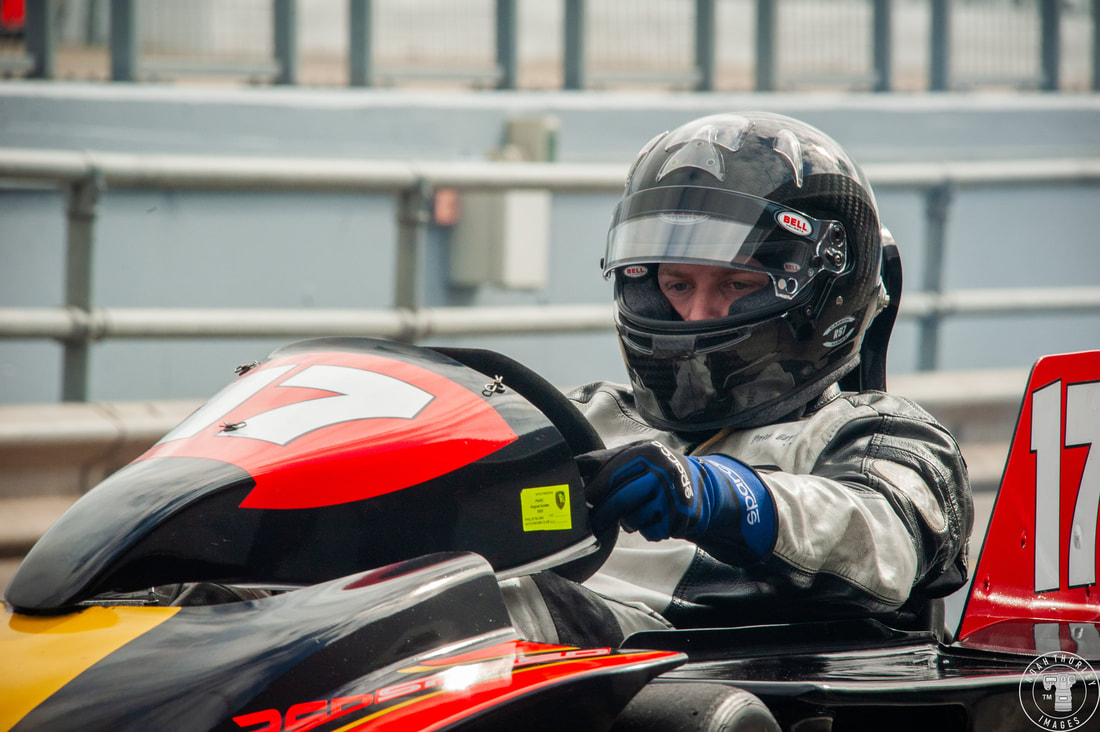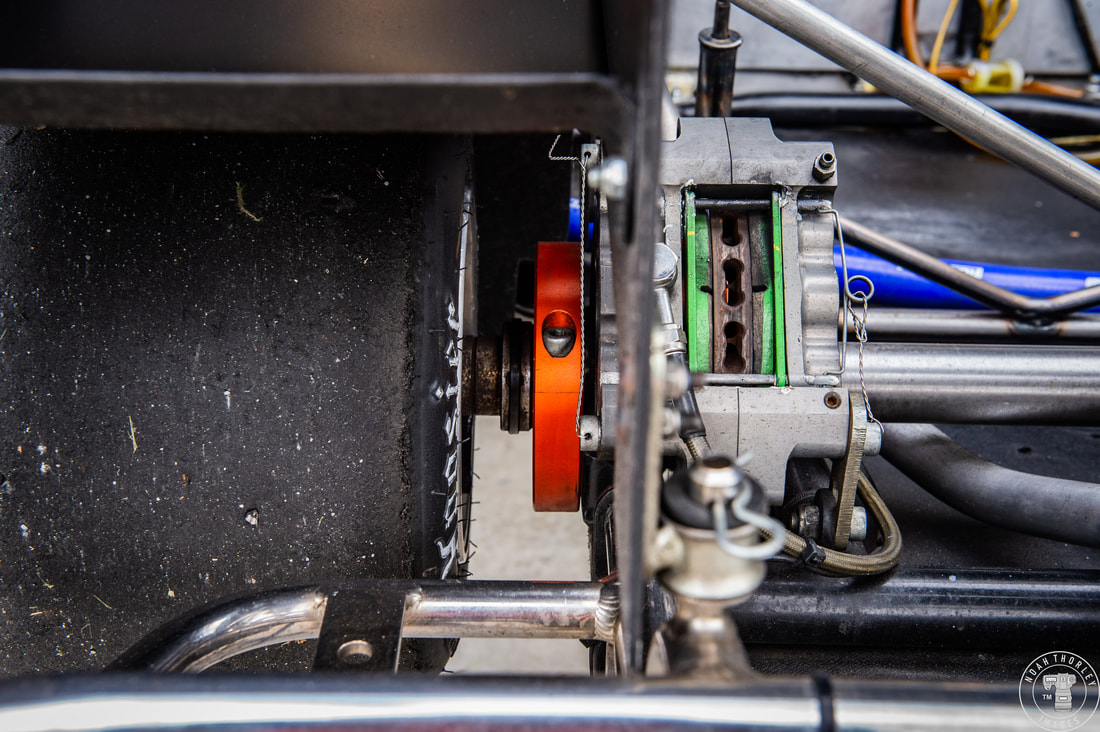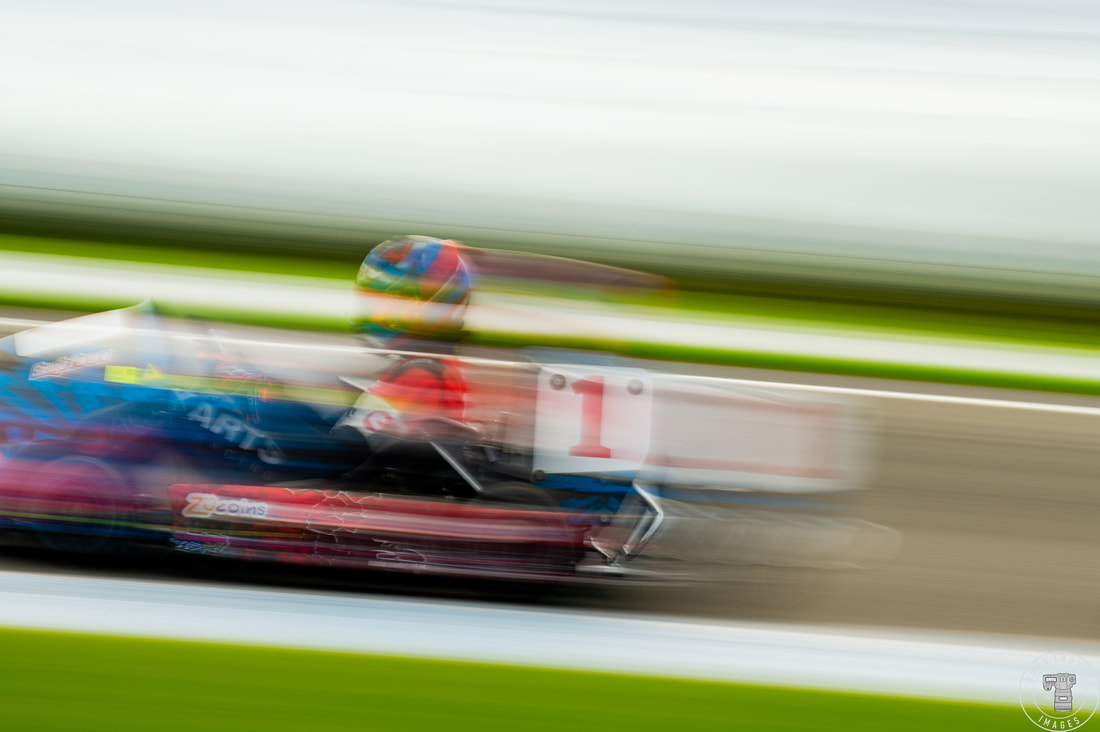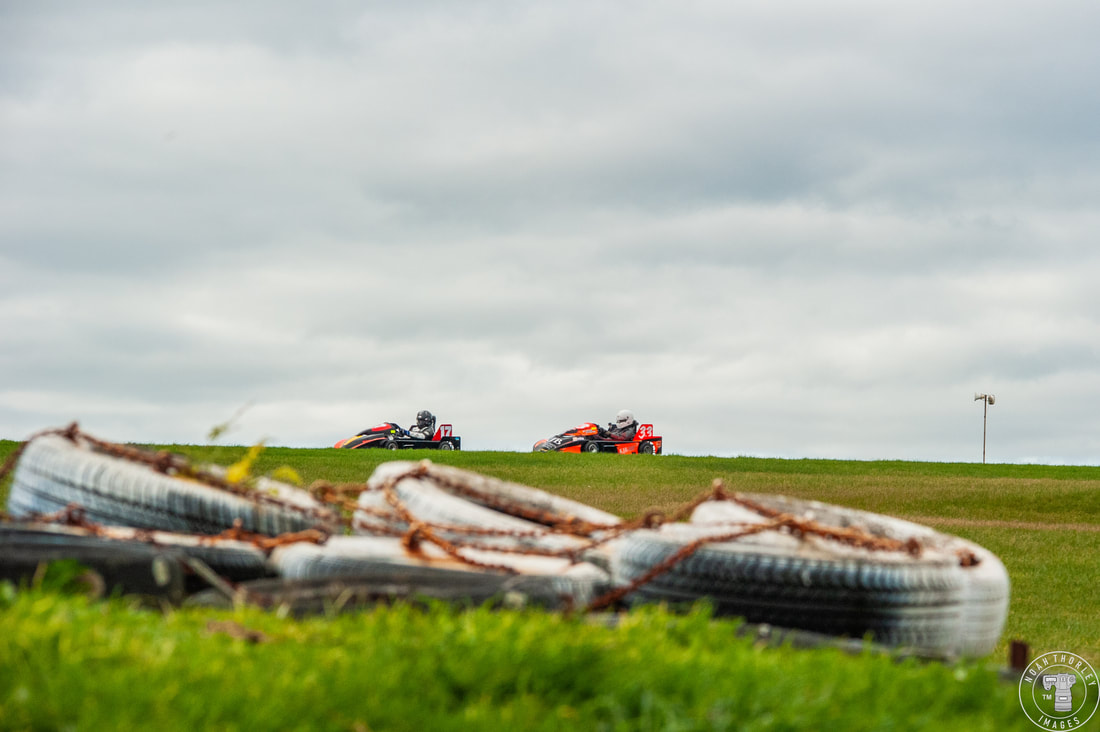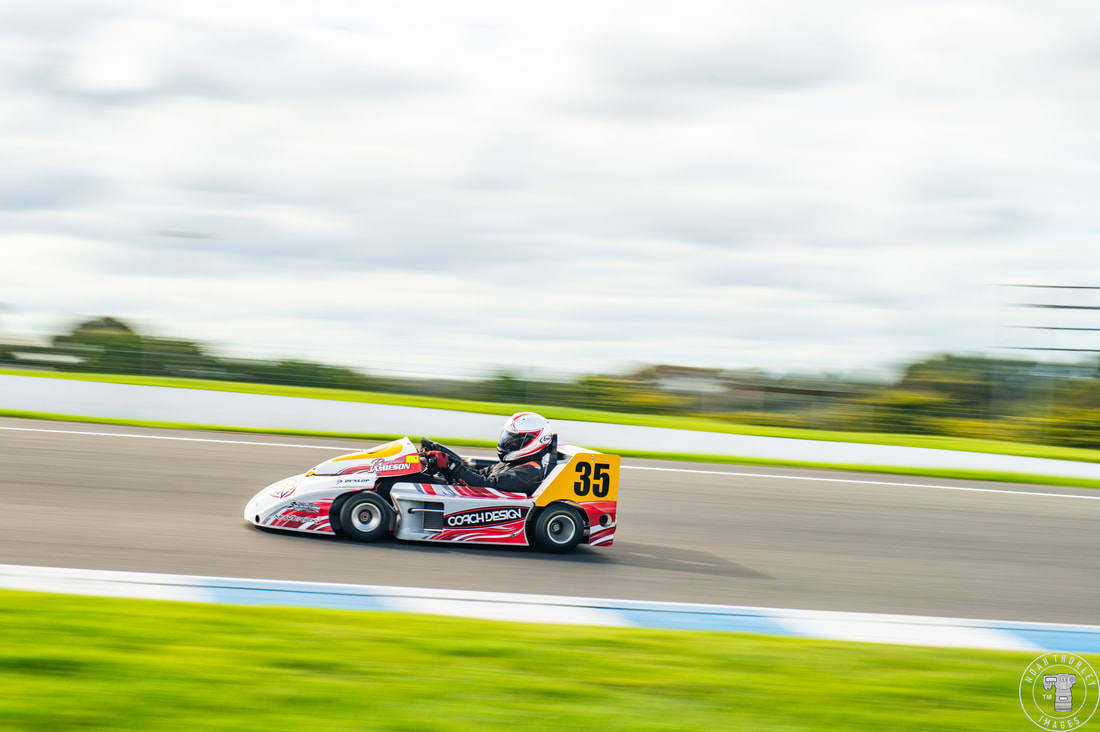|
If you visit Phillip Island, you'll certainly find a pamphlet advertising Go Karts at the Phillip Island Grand Prix Circuit. At the south-west area of the track, you can race go-karts at a small replica of the larger Grand Prix circuit. I'm sure there have been plenty of visitors wishing they could drive the tiny go-karts on the full-length track. These are Superkarts, specifically designed to tackle the big tracks. In Australia, teams and drivers race at circuits all across the country including Winton, Eastern Creek (SMSP), Broadford, Lakeside, Queensland Raceway, The Bend, Wanaroo, Phillip Island and Mallala. With the wider tarmac, drivers can more easily race in large packs, going two and three wide through corners, whilst exploring longer and wider karting lines. Grooved tyres for the wet conditions during the weekend would be used, and as the track dried up, drivers would begin to make the change to slick tyres. In both types of conditions, drivers would slide around the corners, searching for grip whilst correcting any oversteer. It was wild to watch, but not everyone would stay on track. The competition would be split among three categories, although there are actually five classes of Superkarts that are raced under the Victorian Superkart Club. We’ll start with the 125cc Open class. Powered by a 125cc GP motorbike engine paired to a six-speed gearbox, these karts can reach almost 200km/hr. Most drivers like to run a Honda RS125 engine, however, teams aren’t limited to a single brand of engine, nor its tuning modifications. Like all Superkarts, their prominent aerodynamic bodywork makes sure the air pushes down on the front wheels (and with the use of a rear wing, the rear wheels), allowing for more grip through the faster corners. The second type of kart competing in the 125cc category are the Stock Hondas. Powered by a Honda CR125 engine, these karts and the rules are designed as a cheaper entry point into Superkart racing. Any work on the chassis, engine and bodywork is controlled, however, a push start button is allowed to be installed, as most Superkarts need few people to give the kart a push to get started. This next category is a separate 125cc Superkart class. Known as NGB, this is the entry level class of Superkart that uses a FR125 Rotax Max engine, allowing drivers to reach 175km/hr. Uniquely, these Superkarts have a centrifugal clutch instead of a gearbox. This and the exclusion of any engine modifications means that drivers have a kart that is easy to set up, and the ability to focus on learning racing lines, maintaining speed through corners and focusing on race craft rather than seeking a mechanical advantage. The premier Superkart category is the 250cc, again split into two classes. The International class uses a twin cylinder 250cc GP motorbike or purpose built Superkart enigne that produces upwards of 90bhp, giving these karts a top speed of 240km/hr. The chassis and hence aerodynamics are longer and wider, whilst disc brakes are at each corner of the kart. These karts can also include adjustable brake bias and data logging, so some serious stuff in such a small package. The little brother of the 250cc International is the 250cc National. These are powered by a water cooled single cylinder engine producing 60bhp, topping out at 210km/hr. Occasionally, the same chassis will be used as the International class, so similar cornering and handling, just with the less powerful engine package. Superkarts are extremely quick and their small nature makes them a challenge to photograph. I think however, the drivers had a bit more of a challenge on their hands. To finish off, I’ll leave you with an onboard of a Superkart race at Phillip Island, taken in 2015. Bonus Gallery
0 Comments
Leave a Reply. |



